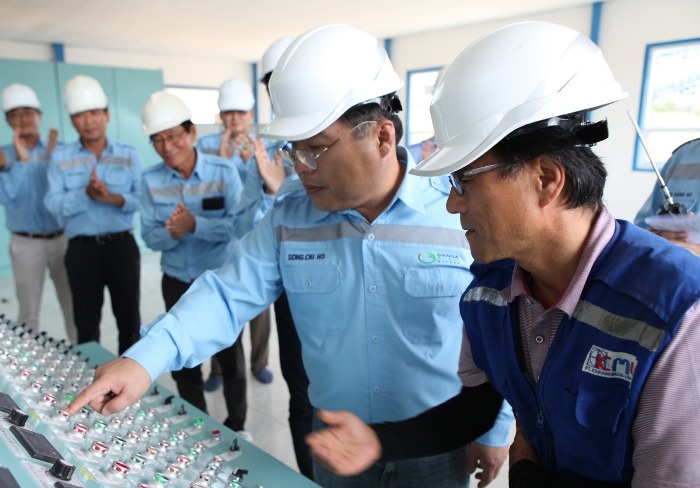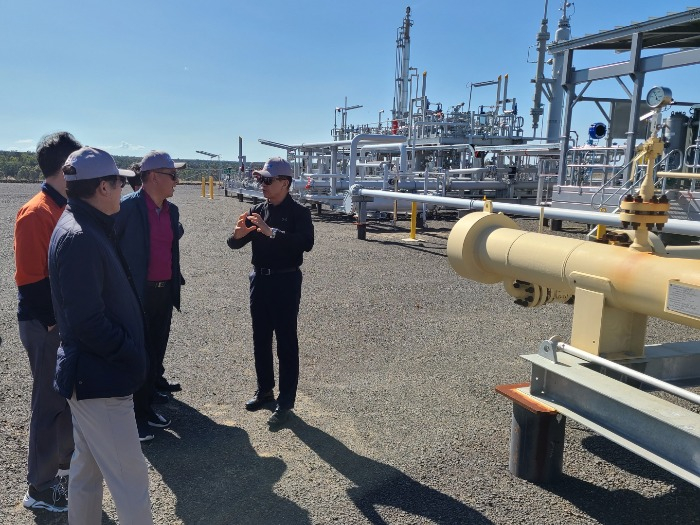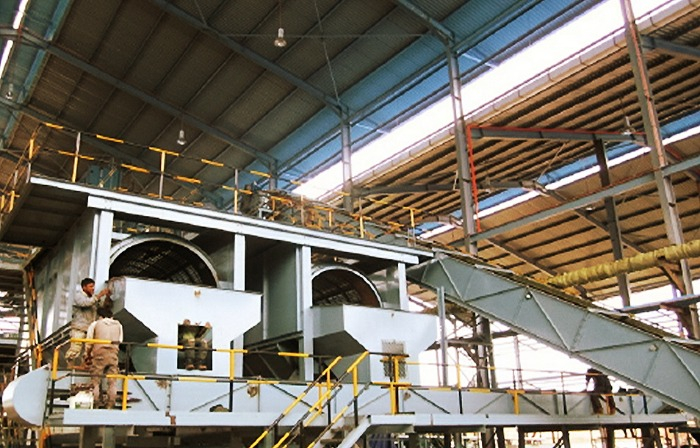Earnings
South Korea’s top general trading giants embrace rising raw materials costs
POSCO International and LX International are seeing a revival in their performances thanks to surging prices of gas, coal, and palm oil
By Aug 02, 2022 (Gmt+09:00)
4
Min read
Most Read
LG Chem to sell water filter business to Glenwood PE for $692 million


Kyobo Life poised to buy Japan’s SBI Group-owned savings bank


KT&G eyes overseas M&A after rejecting activist fund's offer


StockX in merger talks with Naver’s online reseller Kream


Mirae Asset to be named Korea Post’s core real estate fund operator



Back in the 1970s and 80s, general trading companies were the vanguards of South Korea’s exports.
Daewoo International Corp., LG International Corp., and Cheil Industries Inc. were known for venturing into unknown territories and paving the way for their parent companies' global expansions.
The three companies have since been rebranded as POSCO International, LX International Corp., and Samsung C&T Corp.
But as different conglomerates began to construct their own sales networks abroad, the general trading companies gradually lost their clout.
Thanks to the rapid rise in the price of raw materials in recent years, the general trading firms have made a strong comeback.
POSCO IN GAS FIELDS
POSCO International posted 320.6 billion won ($245 million) in operating profit in the second quarter, up 88.6% from the same quarter the previous year, according to the Financial Supervisory Service.
Its second-quarter revenue rose 29.9% year-on-year to 11.7 trillion won ($8.9 billion).
The last three months' operating profit and revenue are both record highs for the company.
The positive outcome is thanks to a stellar performance at the Shwe gas project located in Myanmar, in which the South Korean company has a majority stake. The project is made up of three fields in the Bay of Bengal.
The gas fields’ second-quarter operating profit surged a whopping 143.5% year-on-year to 110.9 billion won.
POSCO International had invested approximately $1.5 billion in the gas project, about 20% of which is used locally while the rest goes to China through pipelines.
The Narrabri mine, which POSCO International reflects profits by the equity method, also performed well during this period.
On the back of skyrocketing prices of coal, Narrabri mine’s operating profit rose to 26.4 billion won from the operating loss seen in the second quarter the year prior.

Australian energy firm Senex Energy Ltd.’s operating profit of 11.1 billion won in the second quarter was also reflected in POSCO International’s overall performance. POSCO acquired the firm in April 2022.
The consensus estimate for POSCO International’s operating profit for 2022 is 57.2% higher than last year’s 920 billion won.
In fact, the average forecasts for the company revenues and earnings by analysts have been increasing steadily for the past three months.
Analysts expect POSCO International to achieve 1 trillion won in operating profit this year on the back of robust sales generated by the Shwe gas project in Myanmar and Australia’s Senex.
LX IN INDONESIA
LX International Corp. also showed explosive growth.
The second quarter revenue stood at 5.2 trillion won, with an operating profit of 289.4 billion won – record highs for both figures.
The revenue and operating profit are 26.9% and 130% jumps respectively from the same quarter last year.
The robust growth is thanks to increased performance at its Ganda Alam Makmur (GAM) coal mine and palm oil plant in Indonesia amid a surge in prices of coal and palm oil.

In the resource department alone, the company recorded 121.5 billion won in operating profit, more than 10 times that of the same quarter in 2021.
Its subsidiary Pantos Logistics also saw a 9.2% jump in operating profit in the second quarter to 100.5 billion won.
The accumulated operating profit soared 123.9% year-on-year in the first half of 2022 to 535.1 billion won.
The consensus estimate for LX International’s operating profit for 2022 jumped more than 45% to 915.7 billion won, higher than the 755.6 billion won that analysts estimated three months ago.
LX International will finalize the acquisition of Hankuk Glass Industries Inc. late next month and that of Poseung Green Power Co. on Oct. 17.
Analysts say the company’s operating profit could exceed 1 trillion won if the newly acquired firms’ performances get reflected in the fourth quarter.
“We are optimistic about our performance in the latter half on the back of surging prices of coal,” an LX International employee told The Korea Economic Daily.
Although trailing behind the two strong players, Samsung C&T Corp. is also forecast to post strong results this year.
The general trading division of Samsung C&T saw its second-quarter revenue rise 26% year-on-year to 5.4 trillion won, while the operating profit surged 43.3% to 129 billion won.
Both figures are record highs for the trading division within the Samsung subsidiary.
Write to Ik-Hwan Kim at lovepen@hankyung.com
Jee Abbey Lee edited this article.
More to Read
-
 EarningsKorea's big three trading firms log record profit in Q1
EarningsKorea's big three trading firms log record profit in Q1May 02, 2022 (Gmt+09:00)
3 Min read
Comment 0
LOG IN


